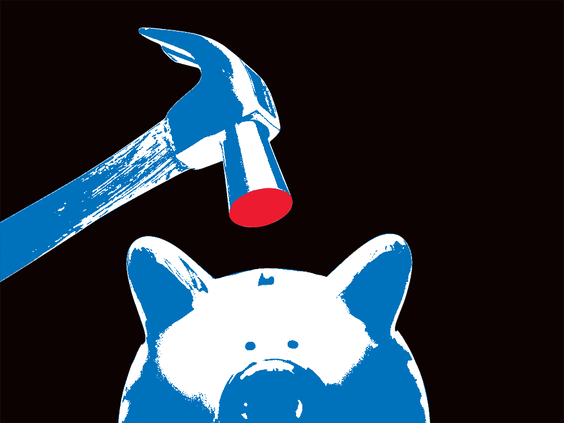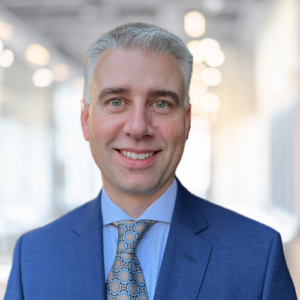Couple think they’ve made a good choice by investing heavily in real estate, but they pay out more renting than they take in on two properties
Situation: Couple pays more in rent than they collect as landlords, an unusual state of affairs
Solution: Move into the rental house, sell the leveraged condo to raise retirement income and cut portfolio risk
A couple we’ll call Phil, 33, and his wife, Penny, 36, live in the lower mainland of B.C. with their two children ages 1 and 4. Phil is a company manager, Penny a health care professional. They bring home $12,492 per month, consisting of Phil’s $6,000 salary after tax, Sandy’s $3,400 after tax, $432 from the Canada Child Benefit, and nominal monthly rental income of $2,660.
Phil and Sandy have two unprofitable real estate holdings and a lot of idle cash. One property is a condo. The other is a house they rent out for income. Yet they pay rent to live in another similar house which they don’t own.
They have $937,000 of mortgage debt. The market value of the rentals is about $1.6 million so they have $663,000 equity in property. Property is 83 per cent of their total assets. However, property market values vary while what they owe to lenders is definite. This odd bind crimps their income.
Penny and Phil live frugally, but their rental income depends on the state of the housing market and their own costs, both of which change from time to time. In the midst of the booming property market, the couple is confident that they have made the right choice of allocating their growing wealth to about 80 per cent property and 20 per cent financial assets. This balance is more risk than reward.
“We hope to continue building assets by purchasing another real estate investment and then to retire when I am 62 in 29 years with a monthly income of $4,500 after tax,” Phil explains.
Their two kids’ RESP with a present balance of $23,500 and monthly contributions of $208 per child plus the 20 per cent Canada Education Savings Grant up to a limit of $7,200 per beneficiary growing at 3 per cent after inflation until each is 17, will provide them with about $70,000 each. If the kids live at home, that would be enough for four years tuition and books at a B.C. post-secondary institution. Summer or part-time jobs could cover any deficit.
A taxing dilemma
Family Finance asked Eliott Einarson, a financial planner in the Winnipeg office of Ottawa-based Exponent Investment Management Inc., to work with Phil and Penny.
Phil and Penny pay $2,700 monthly rent for the house in which they live. That is in after-tax dollars and is more than they take in on the house they rent out for taxable income. This situation must be rationalized lest it wreck their retirement.
“The couple got a boost in building wealth by living in a parent’s home for a decade,” the planner explains. “They have most of their money in two rental properties. The rental house has a $1 million street value, the other rental is a nearly complete condo under construction. The first property, a house, rents for $2,050 per month and they hope to collect $2,250 per month from the condo. The house has a $606,000 mortgage with a 27-year amortization. The $620,000 condo has a $330,000 mortgage with a 25-year amortization. Rent from the two units would be $4,300 when the condo is finished.
On top of mortgage costs of $4,450 per month, the properties have costs for insurance, property taxes, repairs, water, etc. of $1,355 per month. The interest they pay on variable rate mortgages for the two units is rising, as are other holding costs such as insurance and city taxes. They could be in for a two-decade stretch of actually paying tenants to live in the house and condo. With the condo yet to be rented, they have a monthly deficit of $1,505. That has to be fixed.
Retirement income
Penny has a defined-benefit pension from previous work that will pay $21,600 per year at 65. For now, the couple adds $400 monthly to their $88,500 of RRSPs. Their TFSAs, to which they make no current contributions, have a $119,200 balance. There is also a non-registered investment account with a $15,000 balance.
If the RRSPs grow at 3 per cent a year after inflation, they would rise to $425,600 in 29 years when Phil is 62. The TFSAs would rise to $280,900. The $15,000 investment account with no further contributions but the same growth assumptions would become $35,348. The cash balance of $77,450 with the same assumptions would grow to $182,516.
At Phil’s age 62 and Penny’s age 65, assuming the same 3 per cent return after inflation, these sums annuitized to pay out all income and capital in the following 30 years would generate $21,100 from the RRSP, $13,913 from the TFSA, $9,040 from the taxable investment account and $1,785 from cash. Penny would be 65 and could add her job pension of $21,600, her CPP of $9,000 and her OAS of $7,217 for total income of $84,155 before tax. After 14 per cent average tax and no tax on TFSA cash flow, they would have $6,200 per month for expenses, more than enough with mortgage costs, child care, RESP and retirement savings eliminated.
When Phil is 65, they could add his $10,704 estimated CPP and his $7,217 OAS for total and permanent retirement income of $102,076 per year. After 20 per cent average tax and no tax on TFSA cash flow, they would have $7,250 per month to spend.
Rationalizing finances
This case cries out for rationalization, Einarson says. They should stop renting the house they live in, move into the house they rent out, sell the rental condo and invest their $290,000 equity. At a straight 3 per cent per year, that would generate cash flow of $8,700 before tax, pushing before 65 income to $92,855 and income after 65 to $110,776. After tax, incomes would be about $6,564 and $7,950, respectively. That’s a big boost.
The downside of reducing their real estate holdings is, of course, loss of a measure of participation in the roaring B.C. property market. They would, however, still have a house and they could rebalance their real estate exposure with real estate investment trusts in diversified assets such as offices or shopping centres.
“Take the path of greater certainty and flexibility,” Einarson concludes. “The risk of being invested over 80 per cent in real estate is unnecessary.”
Retirement stars: Four **** out of five






